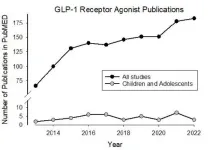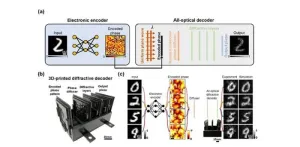(Press-News.org) After a nearly threefold drop in prescriptions for the antibiotic ciprofloxacin between 2015 and 2021, the rates of ciprofloxacin-resistant E. coli bacteria circulating in the community did not decline.
In fact, a study of Seattle-area women over age 50 who had not taken any antibiotics for at least a year discovered that the incidence of gut-colonizing ciprofloxacin-resistant E. coli actually increased. About 1 in 5 women in the study were affected.
Scientists at the University of Washington School of Medicine, Kaiser Permanente Washington Health Research Institute and Seattle Children’s Hospital conducted the study. Their findings appear in Communications Medicine, a new, open-access Nature Portfolio journal.
Their results are consistent with theoretical models indicating that, once a drug-resistant form of E.coli emerges, it will continue to spread by taking up long-term residence in individuals’ gut microbiomes. E. coli is among an alarming number of disease-causing bacteria that have become resistant to several types of antibiotics. Resistance means that the antibiotics can’t kill the bacteria.
Pathogenic E. coli from the gut occasionally enters the urinary tract opening and causes infections. The female pelvic anatomy makes women more vulnerable to these mobile bacteria. Postmenopausal women are especially susceptible to severe, drug-resistant infection. Some drug-resistant E. coli infections are associated with considerable risk of hospitalization and death from sepsis.
Urinary tract infections from antibiotic-resistant E. coli can be frustrating to treat, even with third-generation cephalosporins, the newer types of antibiotics that are being prescribed more frequently for some populations of patients. Resistance to cephalosporins among ciprofloxacin-resistant E. coli also rose between 2015 and 2021.
Ciprofloxacin and similar drugs in its class were once the most prescribed antibiotic for urinary tract infections. In 2015, recommendations from the Centers for Disease Control and Prevention, Food and Drug Administration and Infectious Disease Society of America discouraged broad use of this class of drugs for uncomplicated urinary tract infections, partly due to rising resistance.
“However, it appears to be questionable whether a reduction in antibiotic use can be effective in reducing the rates of resistance in E. coli infections,” the research paper’s authors noted.
“Evidence from studies such as this one may be changing lots of paradigms on how to fight the rise in antibiotic resistance,” said physician scientist Dr. Evgeni V. Sokurenko, professor of microbiology at the University of Washington School of Medicine, who headed this latest research.
In the study, the scientists examined participants’ positive samples to determine which antibiotic-resistant strains of E. coli were present.
They found that the rate of a particularly virulent strain, ST1193, rose during the study period. Together with E. coli strain ST131-H30, these strains are the major causes of a global pandemic of multi-drug-resistant urinary tract infections among all women.
If ST1193 makes its home in more people’s guts, the situation could lead to more urinary tract infections with this more virulent strain, regardless of the curbing of fluoroquinolones prescriptions.
Another strain with a troubling increase in the participant samples was ST69, known to more frequently cause urinary tract infections in children.
The study findings suggest that scientists should prioritize discovering better ways to control drug-resistant E. coli’s ability to colonize the gut before it causes these infections, the authors wrote. They mentioned potential strategies of deploying probiotic bacteria and anti-bacterial viruses (bacteriophages).
The researchers added that these approaches might be offered to high-risk patients or deployed against the most clinically relevant strains. More investigation is needed on the epidemiology and ecology of antibiotic-resistant gut E. coli, they said, to help determine how these bacteria skillfully colonize human guts and how to target them most effectively to reduce antibiotic-resistant infections.
Dr. Veronica L. Tchesnokova, research scientist in microbiology in the Sokurenko lab at the UW School of Medicine, was lead author on the paper. The UW Medicine and Seattle Children’s Hospital team worked with Dr. James Ralston and others at Kaiser Permanente Washington Health Research Institute.
Grants from the National Institute for Allergy and Infectious Diseases at the National Institutes of Health (R01AI106007 and R01AI150152) supported this work.
END
Resistant E. coli rises despite drop in ciprofloxacin use
Community circulation of ciprofloxacin-resistant E. coli paradoxically increased after six-year reduction in antibiotic prescriptions.
2023-08-29
ELSE PRESS RELEASES FROM THIS DATE:
Golden rules for building atomic blocks
2023-08-29
National University of Singapore (NUS) physicists have developed a technique to precisely control the alignment of supermoiré lattices by using a set of golden rules, paving the way for the advancement of next generation moiré quantum matter.
Moiré patterns are formed when two identical periodic structures are overlaid with a relative twist angle between them or two different periodic structures but overlaid with or without twist angle. The twist angle is the angle between the crystallographic orientations of the two structures. For example, when graphene and hexagonal boron nitride (hBN) which are layered materials are overlaid on each other, the atoms in the ...
Researchers at UC Irvine issue a warning that GLP-1RA’s may be dangerous for children
2023-08-29
A team of clinicians, exercise scientists, pharmaceutical scholars, ethicists and behavioral experts at the University of California, Irvine, outlined their concerns that the use of glucagon-like peptide-1 receptor agonists (GLP-1RAs) to treat childhood obesity and type 2 diabetes may have unintended and adverse consequences for children’s health.
The commentary, Unintended Consequences of Glucagon-like Peptide-1 Receptor Agonists Medication in Children and Adolescents – A Call to Action, was published as a perspective in the Journal of Clinical and Translational Science. The article was led by Dan M. Cooper, MD, distinguished professor in the Department of Pediatrics ...
Medicine: Mozart lullaby may relive pain in newborns during blood spot test
2023-08-29
Playing a Mozart lullaby may help reduce the pain experienced by newborn babies undergoing a heel prick blood test, according to a randomised, blinded clinical trial involving 100 infants published in Pediatric Research.
Saminathan Anbalagan and colleagues measured the pain levels of newborn infants undergoing a heel prick blood test as part of routine screening for conditions such as jaundice and phenylketonuria (PKU) in New York City, New York, USA between April 2019 and February 2020. Infants were, on average, two days old and born at 39 gestational weeks, while 53% were male and 61% were Hispanic. As part of standard care, all infants ...
Saving species from extinction - high-quality kākāpō population sequencing provides breakthrough in understanding key conservation genetics
2023-08-29
High-quality sequencing of nearly the entire kākāpō population, funded through a Genomics Aotearoa project, is helping New Zealand to manage the health of this critically endangered species.
Not only is it already making a difference to kākāpō survival, but establishing sequencing methods to work with populations under threat is also likely to be the foundation for the future of endangered wildlife science in New Zealand and the rest of the world.
The state-of-the-art methods developed by Dr. Joseph Guhlin ...
High-fidelity transmission of information via novel electronic-optical system
2023-08-28
Transferring optical information in free space with large bandwidth and high transmission capacity has gained significant attention in various applications, such as remote sensing, underwater communication, and medical devices. Nevertheless, unpredictable, unknown phase perturbations or random diffusers within the optical path pose great challenges, limiting the high-fidelity transmission of optical data in free space. Adaptive optics presents a potential solution that can correct for random distortions ...
Two studies demonstrate the benefits and limitations of artificial intelligence in colonoscopy
2023-08-28
Embargoed for release until 5:00 p.m. ET on Monday 28 August 2023
Annals of Internal Medicine Tip Sheet
@Annalsofim
Below please find summaries of new articles that will be published in the next issue of Annals of Internal Medicine. The summaries are not intended to substitute for the full articles as a source of information. This information is under strict embargo and by taking it into possession, media representatives are committing to the terms of the embargo not only on their own behalf, but also on behalf of the ...
Professor receives grant to develop electronic devices made entirely of paper
2023-08-28
Imagine if you could build an electronic device made entirely of paper. A nontoxic, cost-effective and biodegradable alternative to silicon- and plastic-based components would be a game-changer for a planet quickly filling up with the “e-waste” of discarded gadgets and single-use sensors.
That’s the vision of Binghamton University Professor Seokheun (Sean) Choi. He’s worked for years creating better biobatteries that use bacteria or human sweat to generate energy. Some of those batteries have been paper-based, and now he hopes to apply that knowledge to ...
Quantum computer unveils atomic dynamics of light-sensitive molecules
2023-08-28
DURHAM, N.C. – Researchers at Duke University have implemented a quantum-based method to observe a quantum effect in the way light-absorbing molecules interact with incoming photons. Known as a conical intersection, the effect puts limitations on the paths molecules can take to change between different configurations.
The observation method makes use of a quantum simulator, developed from research in quantum computing, and addresses a long-standing, fundamental question in chemistry critical to processes such as photosynthesis, vision and photocatalysis. It is also an example of ...
Enter Sandman: Study shows dreams spill over into the workplace and can be channeled for productivity
2023-08-28
Before heading to work each day, most people have spent the night dreaming. Studies show that on any given morning, about 40 percent of the working population recalls their dreams.
New research from the University of Notre Dame shows that when dreams are first recalled, people often draw connections between their dreams and waking lives, and the connections they draw alter how they think, feel and act at work.
“A Spillover Model of Dreams and Work Behavior: How Dream Meaning Ascription Promotes Awe and Employee Resilience” is forthcoming in the Academy of Management Journal from lead author Casher Belinda, assistant professor ...
Gender disparities limit chances for women PhD students training to be new inventors
2023-08-28
In the innovation economy, individuals with STEM PhDs are a critical source of human capital, with nearly 60 percent of PhDs in STEM fields— such as engineering, chemistry and biology—being employed outside of universities. These students are increasingly contributing to commercial science through patenting. New research from MIT Sloan School of Management and Copenhagen Business School investigated the training of these PhD students to better understand the pipeline and preparation of new inventors.
Conducted by Fiona Murray, MIT Sloan professor and associate dean for Innovation and Inclusion, ...
LAST 30 PRESS RELEASES:
Tracing the quick synthesis of an industrially important catalyst
New software sheds light on cancer’s hidden genetic networks
UT Health San Antonio awarded $3 million in CPRIT grants to bolster cancer research and prevention efforts in South Texas
Third symposium spotlights global challenge of new contaminants in China’s fight against pollution
From straw to soil harmony: International team reveals how biochar supercharges carbon-smart farming
Myeloma: How AI is redrawing the map of cancer care
Manhattan E. Charurat, Ph.D., MHS invested as the Homer and Martha Gudelsky Distinguished Professor in Medicine at the University of Maryland School of Medicine
Insilico Medicine’s Pharma.AI Q4 Winter Launch Recap: Revolutionizing drug discovery with cutting-edge AI innovations, accelerating the path to pharmaceutical superintelligence
Nanoplastics have diet-dependent impacts on digestive system health
Brain neuron death occurs throughout life and increases with age, a natural human protein drug may halt neuron death in Alzheimer’s disease
SPIE and CLP announce the recipients of the 2025 Advanced Photonics Young Innovator Award
Lessons from the Caldor Fire’s Christmas Valley ‘Miracle’
Ant societies rose by trading individual protection for collective power
Research reveals how ancient viral DNA shapes early embryonic development
A molecular gatekeeper that controls protein synthesis
New ‘cloaking device’ concept to shield sensitive tech from magnetic fields
Researchers show impact of mountain building and climate change on alpine biodiversity
Study models the transition from Neanderthals to modern humans in Europe
University of Phoenix College of Doctoral Studies releases white paper on AI-driven skilling to reduce burnout and restore worker autonomy
AIs fail at the game of visual “telephone”
The levers for a sustainable food system
Potential changes in US homelessness by ending federal support for housing first programs
Vulnerability of large language models to prompt injection when providing medical advice
Researchers develop new system for high-energy-density, long-life, multi-electron transfer bromine-based flow batteries
Ending federal support for housing first programs could increase U.S. homelessness by 5% in one year, new JAMA study finds
New research uncovers molecular ‘safety switch’ shielding cancers from immune attack
Bacteria resisting viral infection can still sink carbon to ocean floor
Younger biological age may increase depression risk in older women during COVID-19
Bharat Innovates 2026 National Basecamp Showcases India’s Most Promising Deep-Tech Ventures
Here’s what determines whether your income level rises or falls
[Press-News.org] Resistant E. coli rises despite drop in ciprofloxacin useCommunity circulation of ciprofloxacin-resistant E. coli paradoxically increased after six-year reduction in antibiotic prescriptions.








